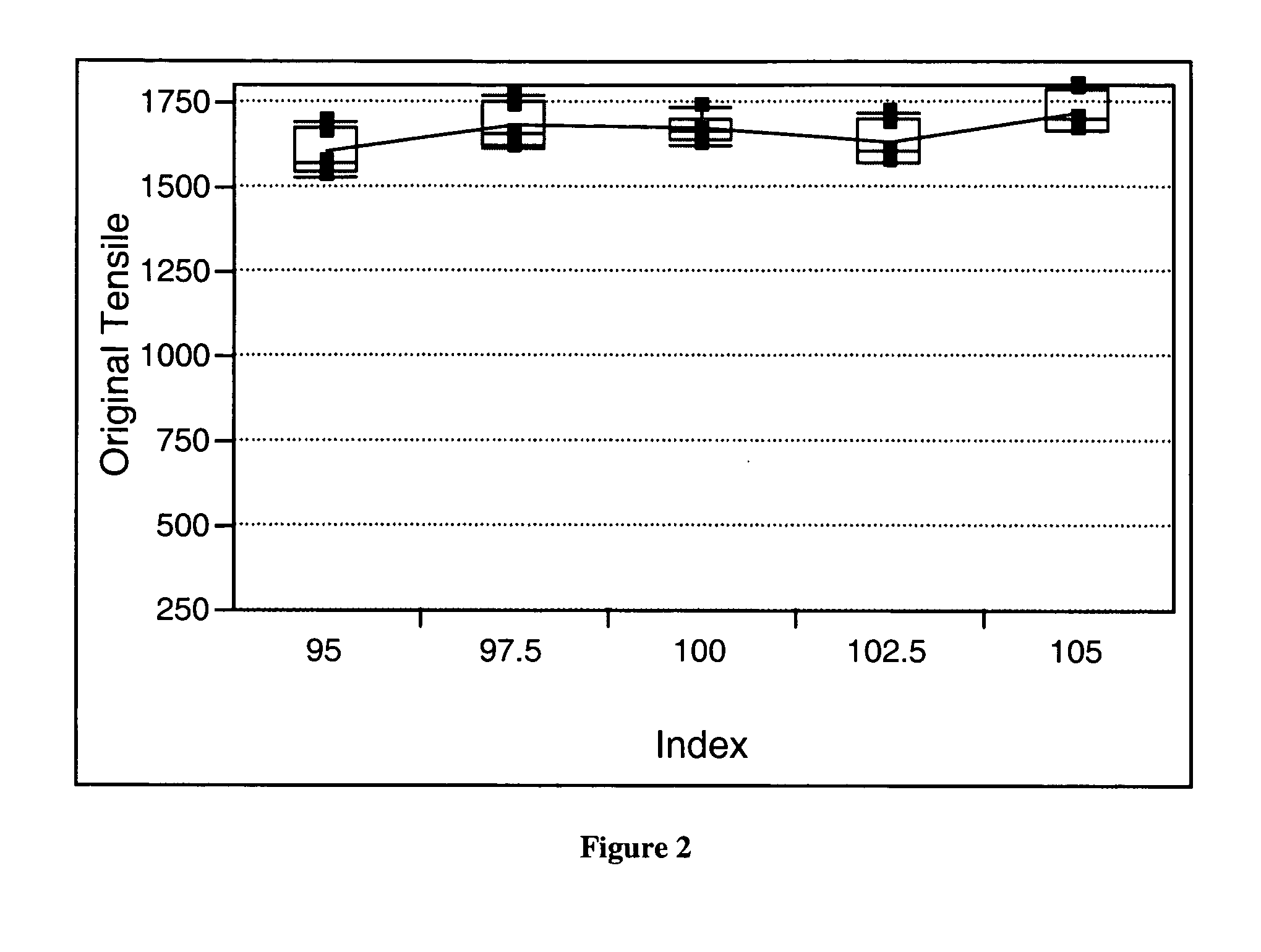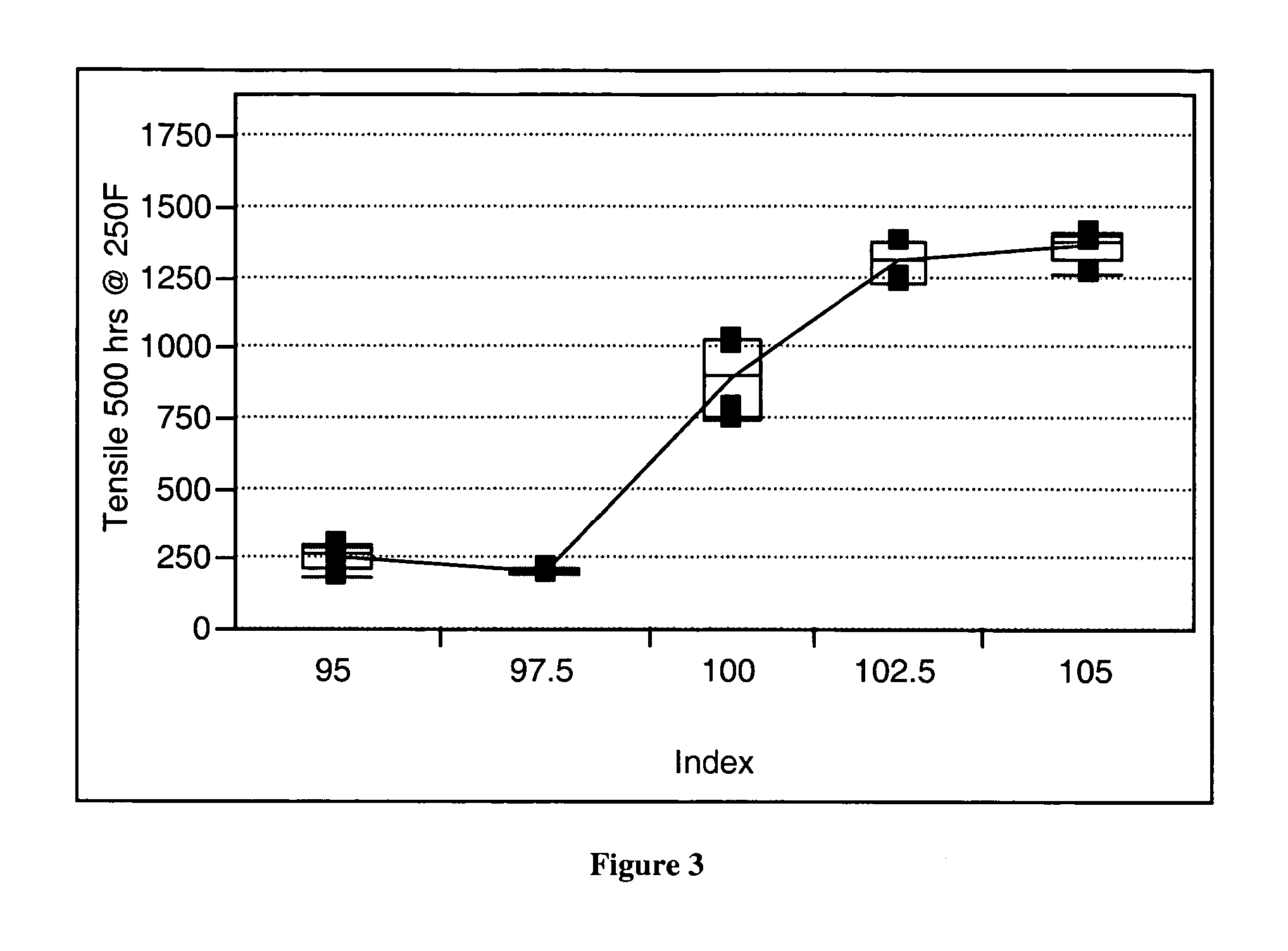Elastomeric urethane composition
a technology of urethane and urethane, which is applied in the field of elastomeric urethane composition, can solve the problems of inefficient reaction of polyol and isocyanate, time spent on inefficient polyol and isocyanate reactions, and inability to reduce the level of volatile organic compounds (vocs) associated with the formation of polyurethane elastomers, and achieves the effect of increasing the reaction rate, reducing the gel time, and high ca
- Summary
- Abstract
- Description
- Claims
- Application Information
AI Technical Summary
Benefits of technology
Problems solved by technology
Method used
Image
Examples
examples
[0078] A series of polyurethane elastomers, Polyurethane Elastomers 1 and 2, were formed using the elastomeric polyurethane composition of the present invention. Water was added to the elastomeric polyurethane composition with an assumption that the water would minimally react with the isocyanate in the presence of the first and second catalysts of the present invention and no formation of gaseous carbon dioxide would result. It was believed that addition of water to the elastomeric urethane composition would allow a water stable first catalyst along with its specificity and reactivity to be identified. The first catalyst is a metal and a ligand and the second catalyst is an amine. Varying the amount of each catalyst and observing differences in rise heights allowed the specificity of the catalyst to be identified. If the first and second catalysts of the present invention minimally catalyzed the reaction of the isocyanate with the water, foaming would be very low. As illustrated, E...
PUM
| Property | Measurement | Unit |
|---|---|---|
| thickness | aaaaa | aaaaa |
| elongation | aaaaa | aaaaa |
| tensile strength | aaaaa | aaaaa |
Abstract
Description
Claims
Application Information
 Login to View More
Login to View More - R&D
- Intellectual Property
- Life Sciences
- Materials
- Tech Scout
- Unparalleled Data Quality
- Higher Quality Content
- 60% Fewer Hallucinations
Browse by: Latest US Patents, China's latest patents, Technical Efficacy Thesaurus, Application Domain, Technology Topic, Popular Technical Reports.
© 2025 PatSnap. All rights reserved.Legal|Privacy policy|Modern Slavery Act Transparency Statement|Sitemap|About US| Contact US: help@patsnap.com



